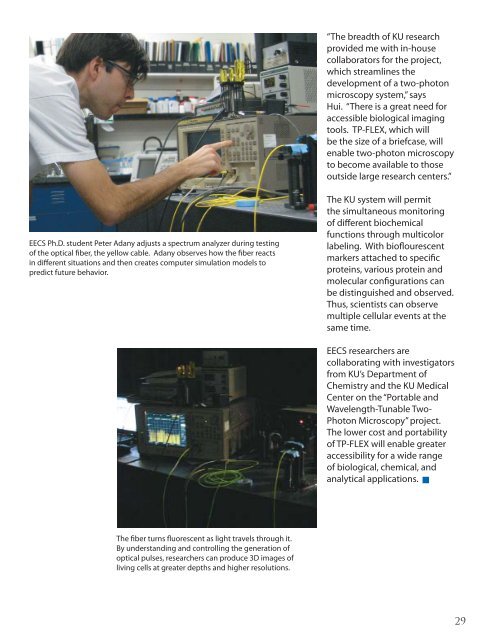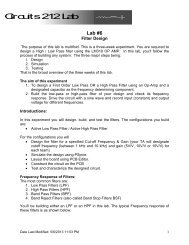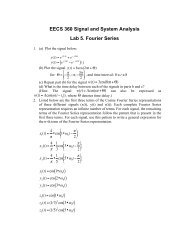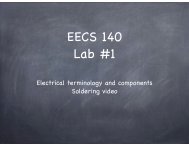EECS News Final 1.30.indd - Electrical Engineering and Computer ...
EECS News Final 1.30.indd - Electrical Engineering and Computer ...
EECS News Final 1.30.indd - Electrical Engineering and Computer ...
Create successful ePaper yourself
Turn your PDF publications into a flip-book with our unique Google optimized e-Paper software.
“The breadth of KU research<br />
provided me with in-house<br />
collaborators for the project,<br />
which streamlines the<br />
development of a two-photon<br />
microscopy system,” says<br />
Hui. “There is a great need for<br />
accessible biological imaging<br />
tools. TP-FLEX, which will<br />
be the size of a briefcase, will<br />
enable two-photon microscopy<br />
to become available to those<br />
outside large research centers.”<br />
<strong>EECS</strong> Ph.D. student Peter Adany adjusts a spectrum analyzer during testing<br />
of the optical fiber, the yellow cable. Adany observes how the fiber reacts<br />
in different situations <strong>and</strong> then creates computer simulation models to<br />
predict future behavior.<br />
The KU system will permit<br />
the simultaneous monitoring<br />
of different biochemical<br />
functions through multicolor<br />
labeling. With bioflourescent<br />
markers attached to specific<br />
proteins, various protein <strong>and</strong><br />
molecular configurations can<br />
be distinguished <strong>and</strong> observed.<br />
Thus, scientists can observe<br />
multiple cellular events at the<br />
same time.<br />
<strong>EECS</strong> researchers are<br />
collaborating with investigators<br />
from KU’s Department of<br />
Chemistry <strong>and</strong> the KU Medical<br />
Center on the “Portable <strong>and</strong><br />
Wavelength-Tunable Two-<br />
Photon Microscopy” project.<br />
The lower cost <strong>and</strong> portability<br />
of TP-FLEX will enable greater<br />
accessibility for a wide range<br />
of biological, chemical, <strong>and</strong><br />
analytical applications. <br />
The fiber turns fluorescent as light travels through it.<br />
By underst<strong>and</strong>ing <strong>and</strong> controlling the generation of<br />
optical pulses, researchers can produce 3D images of<br />
living cells at greater depths <strong>and</strong> higher resolutions.<br />
29













